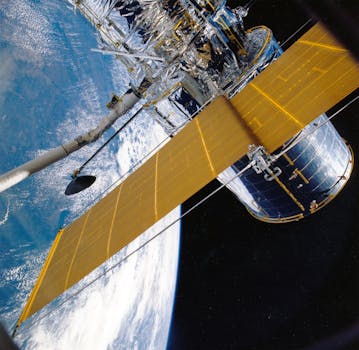From Geostationary to Low Earth Orbit: The Evolution of Satellite Telecommunications in 2023 – Revolutionizing Global Connectivity

From Geostationary to Low Earth Orbit: The Evolution of Satellite Telecommunications in 2023 – Revolutionizing Global Connectivity
From Geostationary to Low Earth Orbit: The Evolution of Satellite Telecommunications in 2023 has been a remarkable journey, marked by significant advancements in technology and a shift in the way satellite communications are being used to enable global connectivity. The focus keyword Satellite Telecommunications is at the forefront of this evolution, as companies and organizations seek to leverage the power of satellite communications to bridge the digital divide and provide internet access to remote and underserved communities. The use of satellites in telecommunications has been around for decades, but the industry has undergone significant transformations in recent years, with a notable shift from traditional geostationary orbit to low earth orbit.
This shift has been driven by the need for faster and more reliable connectivity, as well as the increasing demand for internet access around the world. Geostationary orbit, which is approximately 36,000 kilometers above the equator, has been the traditional choice for satellite communications due to its ability to provide continuous coverage of a specific region. However, signals transmitted from geostationary orbit have to travel a long distance, resulting in higher latency and slower speeds. In contrast, low earth orbit, which is approximately 160-2,000 kilometers above the earth, offers several advantages, including lower latency, faster speeds, and improved connectivity.
The Benefits of Low Earth Orbit

The benefits of low earth orbit are numerous, and companies such as SpaceX, OneWeb, and Amazon’s Kuiper Systems are already leveraging this technology to provide global connectivity. One of the main advantages of low earth orbit is its ability to provide lower latency, which is critical for applications such as video conferencing, online gaming, and virtual reality. Low earth orbit satellites can also provide faster speeds, with some companies promising speeds of up to 1 Gbps. Additionally, low earth orbit satellites are less prone to interference and can provide more reliable connectivity, making them an attractive option for industries such as finance, healthcare, and education.
Challenges and Opportunities

While the shift to low earth orbit presents several opportunities, it also poses some challenges. One of the main challenges is the need for a larger constellation of satellites to provide global coverage, which can be costly and complex to deploy and manage. Additionally, there are concerns about space debris and the potential for collisions between satellites. Despite these challenges, the opportunities presented by low earth orbit are significant, and companies are investing heavily in this technology. The use of low earth orbit satellites is also expected to drive innovation in areas such as satellite manufacturing, launch technologies, and ground infrastructure.
Conclusion

In conclusion, the evolution of satellite telecommunications from geostationary to low earth orbit is a significant development that is revolutionizing global connectivity. The benefits of low earth orbit, including lower latency, faster speeds, and improved connectivity, make it an attractive option for industries and individuals around the world. While there are challenges to be addressed, the opportunities presented by this technology are substantial, and it is expected to drive innovation and investment in the years to come. As the demand for global connectivity continues to grow, the use of low earth orbit satellites is likely to play an increasingly important role in providing internet access to remote and underserved communities, bridging the digital divide and enabling economic growth and development.



